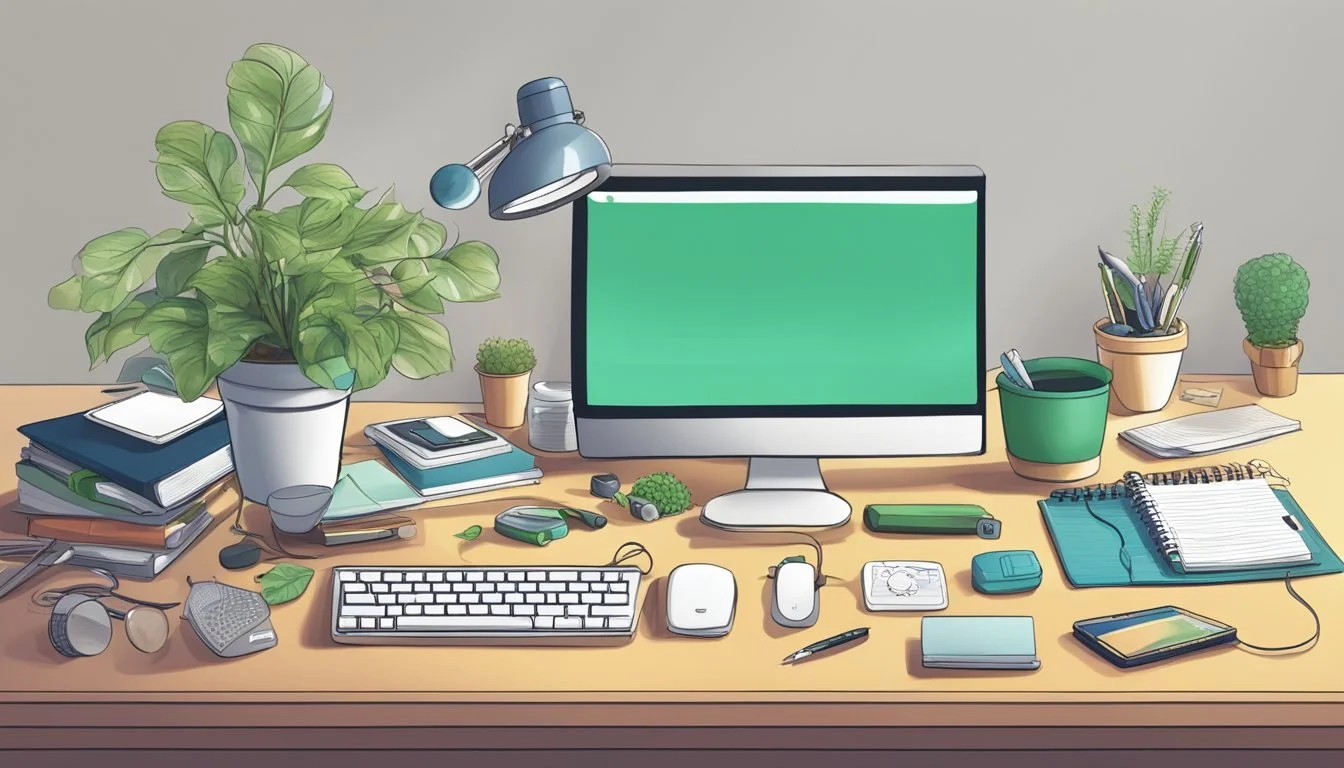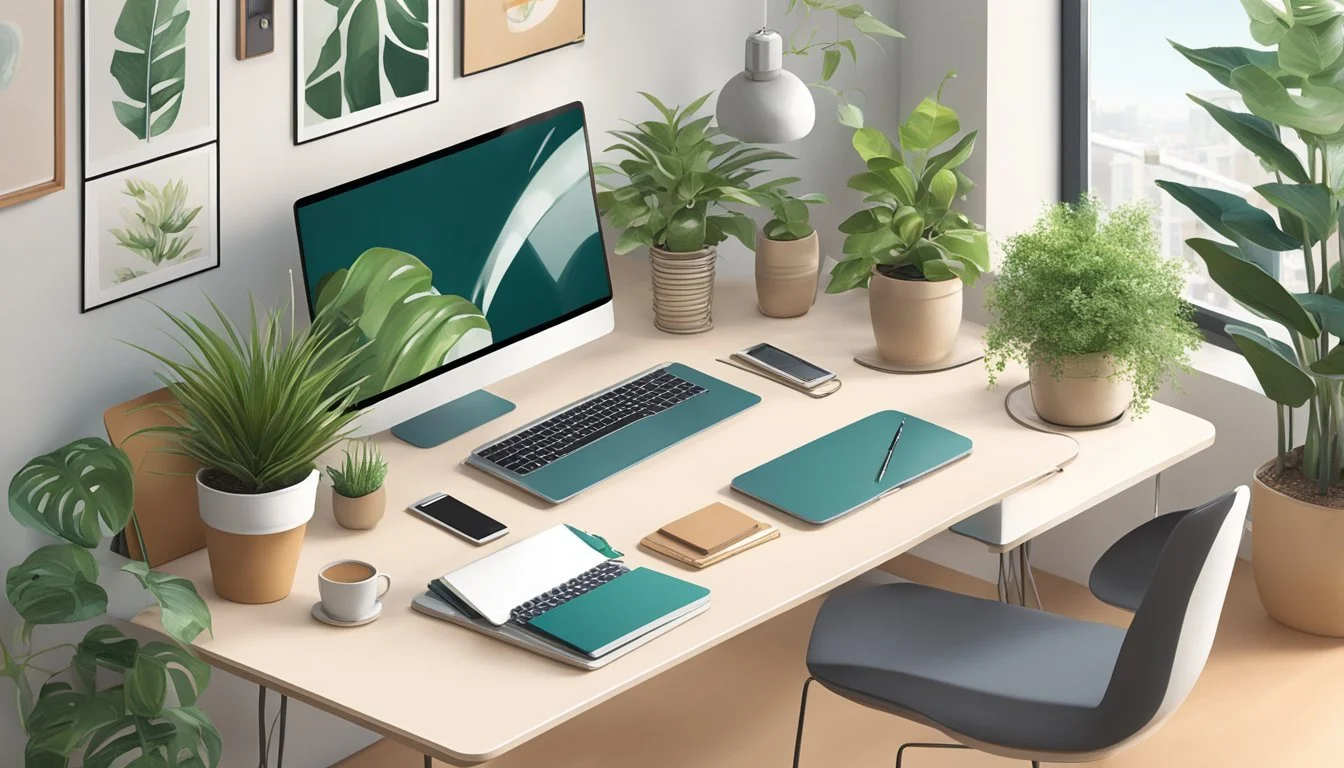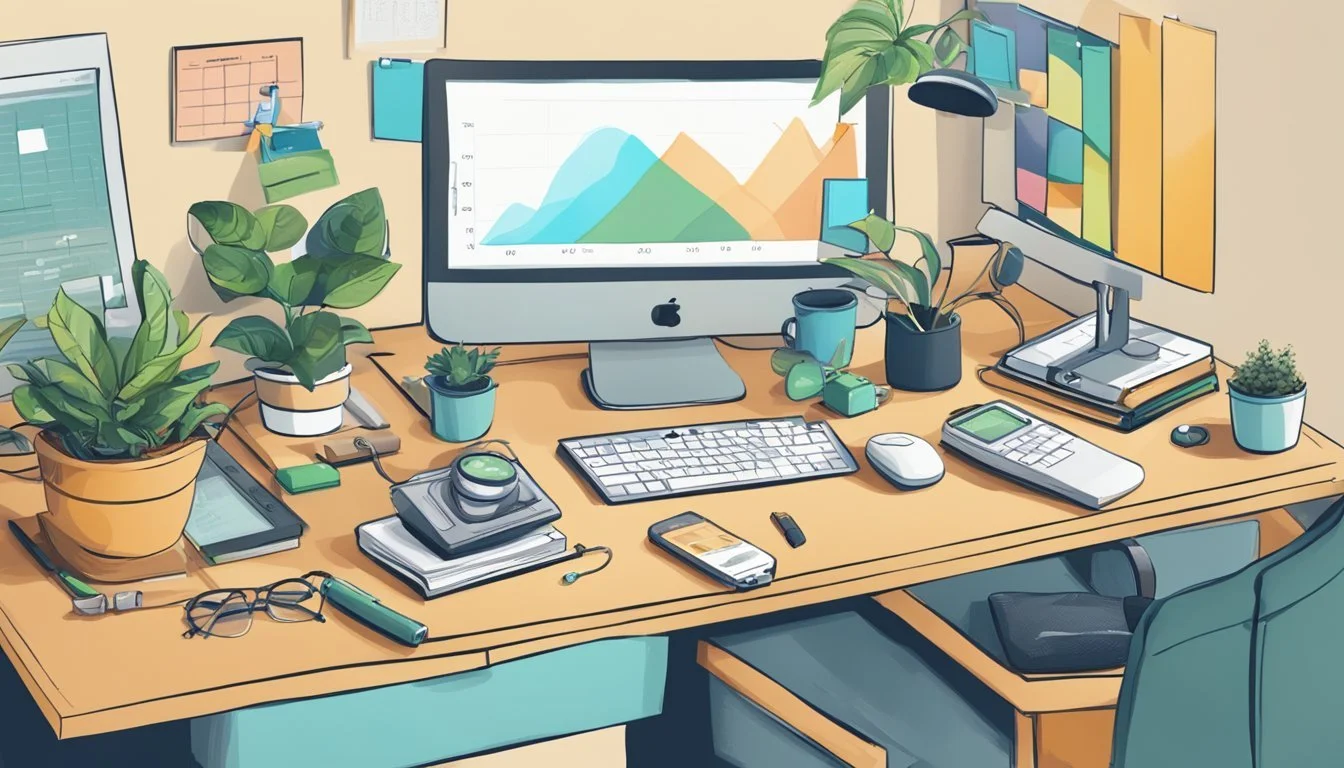8 Strange but Effective Ways to Boost Your Productivity
Unconventional Tactics for Getting More Done
Productivity hacks come in all shapes and sizes. While some methods are well-known and widely practiced, others may seem unconventional or even bizarre at first glance. These unusual techniques often prove surprisingly effective, offering fresh approaches to boost efficiency and output.
Embracing unconventional productivity strategies can lead to unexpected breakthroughs in personal and professional performance. By exploring these atypical methods, individuals may discover new ways to overcome procrastination, enhance focus, and accomplish more in less time. The following list presents eight strange but effective techniques that have helped people increase their productivity and achieve their goals.
1) Use a Pomodoro Timer
The Pomodoro Technique is a time management method that can significantly boost productivity. It involves working in focused 25-minute intervals, called "Pomodoros," followed by short breaks.
To implement this technique, one needs a timer. Many apps and websites offer Pomodoro timers, or a simple kitchen timer can suffice. The user sets the timer for 25 minutes and works on a single task without interruptions until it rings.
After each Pomodoro, a 5-minute break is taken. This pattern repeats four times, after which a longer break of 15-30 minutes is recommended. These breaks help maintain focus and prevent burnout.
The Pomodoro Technique helps break large tasks into manageable chunks. It also creates a sense of urgency, encouraging efficient work within the time constraint. By providing regular breaks, it allows the mind to rest and recharge.
Users often find they can accomplish more in less time using this method. It helps combat procrastination and improves time awareness. The technique is flexible and can be adapted to individual needs and work styles.
2) Listen to Classical Music
Classical music can have a surprising impact on productivity. Studies have shown that certain compositions may enhance cognitive performance and focus.
Music from the Baroque and Classical eras seems particularly effective. These pieces often have tempos of 60-80 beats per minute, which align well with natural mental rhythms.
Listening to classical music while working can lead to measurable improvements. Some research indicates it may increase accuracy by 12% and double the time spent focused on tasks.
The complex structures in classical music appear to activate brain areas associated with concentration and emotional processing. This activation may contribute to improved mental performance.
However, individual responses can vary. Some people may find classical music distracting rather than helpful. It's worth experimenting to see if it enhances your own productivity.
When choosing classical pieces for work, opt for instrumental compositions without lyrics. This can help avoid linguistic interference with tasks involving reading or writing.
3) Work Standing Up
Standing desks have gained popularity in recent years as an unconventional way to boost productivity. These adjustable workstations allow users to alternate between sitting and standing throughout the day.
Working while standing can increase energy levels and improve focus. It promotes better posture and reduces the risk of back pain associated with prolonged sitting. Some studies suggest that standing desks may even lead to improved cognitive function.
Transitioning to a standing desk requires an adjustment period. Start by standing for short intervals and gradually increase the duration. Proper ergonomics are crucial - ensure the desk height allows your arms to rest comfortably at a 90-degree angle.
Consider using an anti-fatigue mat to reduce leg and foot discomfort. Wearing comfortable shoes is also important when working while standing. Remember to shift your weight and move around periodically to maintain circulation.
For those unable to invest in a full standing desk, portable desk converters offer a more affordable alternative. These units can be placed on existing desks to create a raised work surface.
4) Decorate Your Workspace with Plants
Adding plants to your workspace can significantly boost productivity and well-being. Studies have shown that indoor plants can reduce stress, increase focus, and improve air quality.
Consider low-maintenance options like snake plants, pothos, or spider plants that thrive in office environments. These plants require minimal care and can adapt to various light conditions.
Vertical gardens or hanging plants are excellent choices for maximizing space in smaller offices. They add a touch of nature without taking up valuable desk or floor space.
Plants can also serve as natural dividers between workstations, creating a sense of privacy and reducing noise levels. This can lead to improved concentration and fewer distractions.
Incorporating plants into your office decor doesn't have to be expensive. Start small with a few desk plants and gradually expand your collection as you see fit.
Remember to choose plants that align with your workspace's aesthetic. Succulents can add a modern touch, while larger plants like rubber plants can make a bold statement.
5) Practice Mindfulness Meditation
Mindfulness meditation has emerged as a powerful tool for boosting productivity in the workplace. This practice involves focusing attention on the present moment, acknowledging thoughts and feelings without judgment.
Regular mindfulness meditation can help reduce stress and anxiety, leading to improved concentration and decision-making abilities. By training the mind to stay focused, individuals can better manage distractions and maintain productivity throughout the day.
One effective technique is to start the workday with a short meditation session. This can be as simple as sitting quietly for five minutes, focusing on breathing, and letting go of any mental clutter.
During work hours, brief mindfulness breaks can help reset focus and increase energy levels. Taking a few deep breaths or doing a quick body scan can bring attention back to the present task.
Mindfulness meditation can also improve emotional regulation, helping individuals respond more calmly to workplace challenges. This can lead to better communication and collaboration with colleagues.
Integrating mindfulness into daily work routines doesn't require extensive time commitments. Even short, consistent practice can yield significant benefits for productivity and overall well-being in the professional environment.
6) Drink Matcha Tea
Matcha tea, a finely ground powder made from green tea leaves, has gained popularity as a productivity booster. This Japanese beverage contains caffeine, which can enhance alertness and focus.
Matcha also provides L-theanine, an amino acid that promotes relaxation without causing drowsiness. The combination of caffeine and L-theanine can create a state of calm alertness, potentially improving concentration and cognitive performance.
The preparation of matcha involves whisking the powder with hot water, creating a frothy drink. This ritual can serve as a mindful break in a busy day, allowing for a moment of pause and rejuvenation.
Matcha is rich in antioxidants, particularly catechins, which may support overall health. Some studies suggest that these compounds could have neuroprotective properties, potentially benefiting long-term brain function.
For those seeking an alternative to coffee, matcha offers a smoother energy boost without the jitters often associated with high caffeine intake. Its effects tend to last longer, providing sustained energy throughout the workday.
7) Break Tasks into Smaller Steps
Breaking tasks into smaller, manageable steps is a powerful productivity technique. Large projects can often feel overwhelming, leading to procrastination and reduced efficiency.
By dividing tasks into smaller components, individuals can create a clear roadmap for completion. This approach makes the workload seem less daunting and more achievable.
Each small step provides a sense of progress and accomplishment. This positive reinforcement can boost motivation and encourage continued productivity.
Breaking tasks down also allows for better time management. Smaller steps can be easily scheduled and completed within specific time blocks, enhancing overall efficiency.
This method helps in identifying potential obstacles early on. By examining each step individually, one can anticipate challenges and develop strategies to overcome them.
It's important to keep the steps specific and actionable. Vague or overly broad steps can still lead to procrastination. Clear, well-defined steps promote focus and direction.
Regularly reviewing and adjusting the breakdown of tasks can further optimize productivity. As progress is made, new insights may emerge, allowing for refinement of the task structure.
8) Use the Eisenhower Matrix
The Eisenhower Matrix is a productivity tool that categorizes tasks based on their urgency and importance. This simple yet effective method helps prioritize work and manage time more efficiently.
To use the matrix, draw a four-quadrant box. Label the columns "Urgent" and "Not Urgent," and the rows "Important" and "Not Important." This creates four distinct categories for tasks.
Quadrant 1 contains urgent and important tasks that require immediate attention. Quadrant 2 holds important but not urgent tasks, which contribute to long-term goals and personal development.
Quadrant 3 includes urgent but not important tasks, often interruptions or distractions. Quadrant 4 consists of tasks that are neither urgent nor important and should be minimized or eliminated.
By categorizing tasks into these quadrants, users can focus on what truly matters. The matrix encourages spending more time on Quadrant 2 activities, which can prevent tasks from becoming urgent and stressful.
Regular use of the Eisenhower Matrix can lead to improved decision-making, reduced stress, and increased productivity. It provides a clear framework for prioritizing tasks and allocating time effectively.
Understanding Productivity
Productivity is a crucial concept in both personal and professional spheres. It encompasses the efficient use of resources to achieve desired outcomes.
Defining Productivity
Productivity refers to the ratio of output to input in a given period. It measures how effectively individuals or organizations utilize time, energy, and resources to produce results. Productivity involves completing tasks efficiently and generating valuable outcomes.
Key elements of productivity include focus, energy management, and strategic prioritization. High productivity means accomplishing more in less time without sacrificing quality.
Productive individuals tend to minimize distractions, optimize their work processes, and maintain consistent effort towards their goals.
Importance of Productivity
Productivity directly impacts success across various life areas. Higher productivity enables faster goal achievement and improved performance. It allows individuals to accomplish more with limited resources.
Increased productivity can lead to:
Better time management
Reduced stress levels
Enhanced work-life balance
Greater job satisfaction
Improved career opportunities
In business settings, productivity boosts profitability and competitiveness. It drives innovation and economic growth on a larger scale.
Focusing on productivity helps individuals maximize their potential and make meaningful progress in their personal and professional lives.
Strategies to Enhance Focus
Enhancing focus is crucial for boosting productivity. Two key areas to concentrate on are mindfulness practices and effective time management techniques.
The Role of Mindfulness
Mindfulness exercises can significantly improve concentration and focus. Regular meditation, even for just 10 minutes a day, helps train the mind to stay present and avoid distractions.
Deep breathing exercises are another effective tool. Taking slow, deliberate breaths for a few minutes can quickly reset mental focus and reduce stress.
Mindful eating is also beneficial. Paying full attention to meals without multitasking allows the brain to recharge and refocus.
Incorporating brief mindfulness breaks throughout the workday can prevent mental fatigue and maintain high levels of concentration.
Effective Time Management
Time management strategies are essential for maintaining focus and productivity. The Pomodoro Technique is a popular method involving 25-minute focused work sessions followed by short breaks.
Time blocking is another effective approach. Scheduling specific tasks for set time periods helps prevent multitasking and increases efficiency.
To-do lists organized by priority can guide focus to the most important tasks first. Breaking large projects into smaller, manageable steps also aids concentration and progress.
Limiting distractions is crucial. Turning off notifications and designating specific times for checking emails and messages can significantly boost focus and productivity.
Leveraging Unconventional Methods
Innovative approaches to productivity often yield surprising results. By rethinking workspace design and integrating strategic break techniques, individuals can unlock new levels of efficiency and focus.
Utilizing Workplace Design
Unconventional workspace layouts can significantly impact productivity. Standing desks encourage movement and improve posture, potentially increasing energy levels. Alternatively, implementing a "hot desking" system where employees rotate workstations can spark creativity through environmental changes.
Color psychology plays a crucial role in workplace design. Blue hues promote calm and focus, while yellow stimulates creativity. Incorporating plants into the office space can reduce stress and improve air quality, leading to better concentration.
Noise management is essential. Some individuals thrive with background noise, making coffee shop-inspired workspaces beneficial. Others require silence, necessitating designated quiet zones or noise-canceling headphones.
Incorporating Break Techniques
Strategic breaks can enhance productivity rather than hinder it. The Pomodoro Technique involves 25-minute focused work sessions followed by 5-minute breaks. This method helps maintain concentration and prevents burnout.
Micro-workouts during breaks, such as desk stretches or quick walks, boost blood flow and reinvigorate the mind. Some companies have implemented nap pods, recognizing the benefits of short power naps for improved alertness and creativity.
Mindfulness exercises, like brief meditation sessions or deep breathing techniques, can reset mental focus. These practices help reduce stress and increase overall work efficiency.









